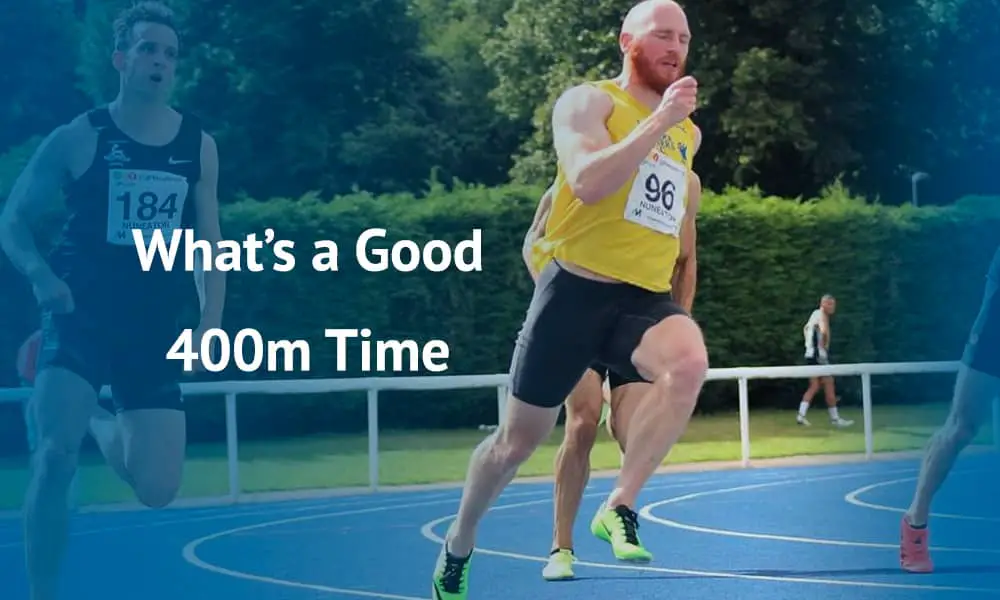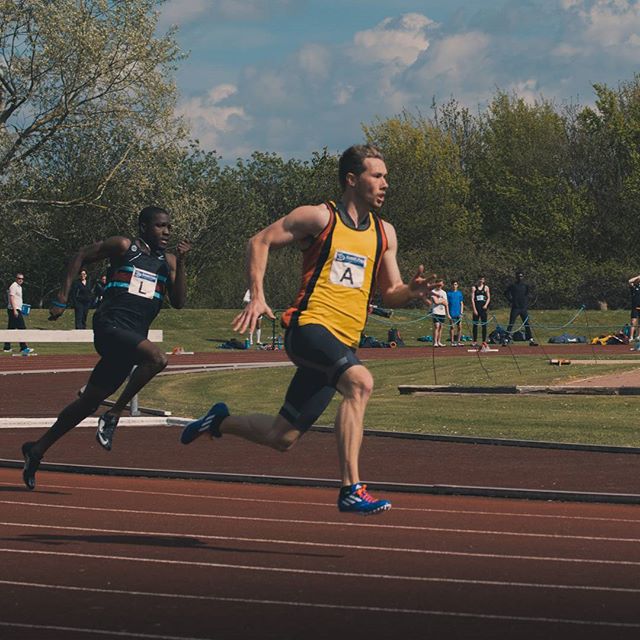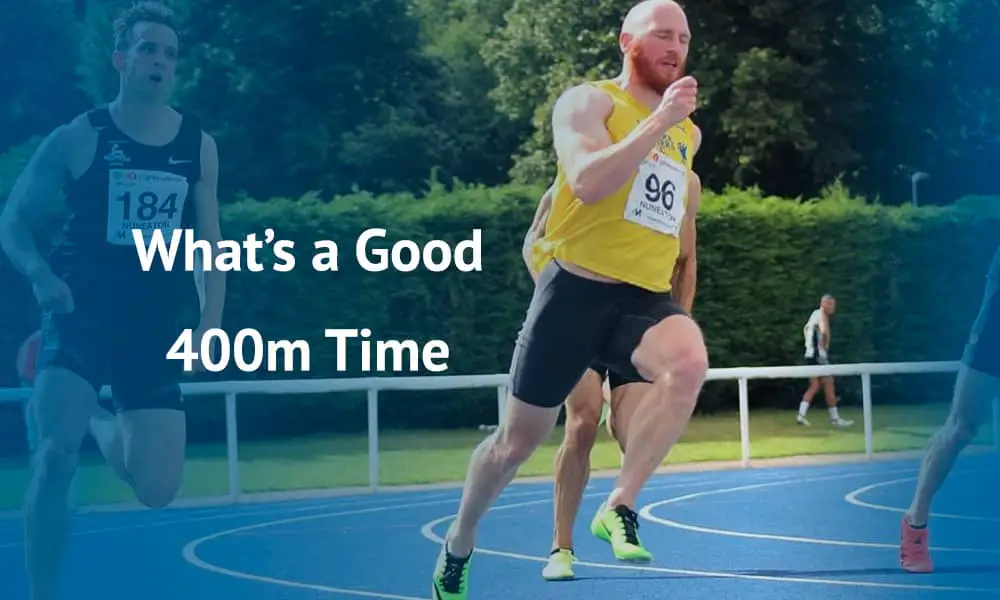Other Posts
- March 21, 2023Discover a good 10k time…
Benefits of Running in the Morning and Why You Should Do It
February 14, 2025Running in the morning has…


A good 400m time for a man is to run under 50 seconds. The 50 seconds barrier is a time all 400m runners want to beat. Running under this time will put you in the top 200 in the country.
The 400m race holds a special place, known for its unique blend of intensity and endurance. This one-lap sprint is more than just a test of speed; it’s a comprehensive challenge that pushes athletes to their limits.
The 400m is not just any sprint – it’s the longest of the standard sprints, occupying a unique middle ground in track and field. This event requires athletes to harness their explosive speed right from the start, while simultaneously managing their energy to maintain a swift pace throughout the entire lap. It’s this balance between quick bursts of speed and sustained velocity that makes the 400m both fascinating and demanding.
What makes the 400m particularly challenging is the inevitable battle with lactic acid build-up. As runners push their bodies to maintain high speeds, lactic acid accumulates in their muscles, leading to fatigue and a burning sensation. Overcoming this physiological hurdle requires not just physical strength but also mental resilience and strategic pacing.

Table of Contents
| Age Group | Beginner (min:sec) | Average (min:sec) | Elite (min:sec) |
| 15-19 | 01:20 | 00:58 | 00:48 |
| 20-24 | 01:15 | 00:55 | 00:47 |
| 25-29 | 01:15 | 00:55 | 00:46 |
| 30-34 | 01:25 | 00:56 | 00:47 |
| 35-39 | 01:30 | 00:59 | 00:50 |
| 40-44 | 01:35 | 01:05 | 00:55 |
| 45-49 | 01:40 | 01:10 | 00:58 |
| 50-54 | 01:45 | 01:20 | 01:02 |
| 55-59 | 01:55 | 01:25 | 01:06 |
| 60-64 | 02:00 | 01:30 | 01:10 |
| 65+ | 02:10 | 01:40 | 01:15 |
| Age Group | Beginner (min:sec) | Average (min:sec) | Elite (min:sec) |
| 15-19 | 01:30 | 01:05 | 00:52 |
| 20-24 | 01:25 | 01:03 | 00:51 |
| 25-29 | 01:25 | 01:03 | 00:50 |
| 30-34 | 01:35 | 01:08 | 00:52 |
| 35-39 | 01:40 | 01:15 | 00:55 |
| 40-44 | 01:45 | 01:20 | 01:00 |
| 45-49 | 01:50 | 01:25 | 01:03 |
| 50-54 | 01:55 | 01:30 | 01:08 |
| 55-59 | 02:05 | 01:35 | 01:12 |
| 60-64 | 02:15 | 01:45 | 01:18 |
| 65+ | 02:25 | 01:55 | 01:25 |
According to the USATF website, the average time for a high school male runner in a 400-meter race is 54 seconds and 58 seconds for females of that age group.
For the average Joe off the streets, 70 to 90 seconds would be an average time for the 400m. With elite runners running between 45 and 47 seconds.
The Olympic 400m time is usually around 44 seconds for men and 48 seconds for women, though other qualifying times can be set as well. They vary depending on the age of the athlete & the country they are competing for.
The fastest women’s 400 meter time is 47.60 seconds, set by Marita Koch.
Fastest men’s 400m is set by Wayde Van Niekerk in 43.03 seconds set at the Rio Olympics back in 2016.
A good 400m time for all age groups is around 52 seconds. Wayde van Niekerk set the world record in 43.03.
It is pretty much impossible for anyone to sprint the 400 m flat out. Instead, the 400 meters is considered a controlled sprint race. You’re still running quickly; you’re not running flat out and therefore conserving energy at points during the run.
In the 400m race, the psychological aspects, including race strategy and tactics, overcoming fear and pain, and motivation and goal setting, are as crucial as physical preparation.
The 400m race is as much a mental challenge as it is physical. Athletes need to be prepared for the intense discomfort, particularly in the final stages of the race. Strategies like focusing on specific aspects of their form or technique can help distract from the pain. Training sessions that simulate race conditions are crucial for building mental resilience and familiarity with the pain.
Setting realistic yet challenging goals is essential for 400m runners. These goals can range from achieving personal bests to mastering specific phases of the race. Motivation can also come from the desire to overcome personal limits, the thrill of competition, and the satisfaction of achieving set goals.
Factors such as wind and temperature significantly impact your time in a 400m race.
Wind plays a crucial role in outdoor track performances. A headwind, especially on the back straight, can slow you down as it adds resistance, preventing you from relaxing into the race. Conversely, a tailwind can assist your performance. However, it’s important to note that the benefits of a tailwind don’t completely negate the drawbacks of a headwind. Wind assistance is a complex factor, varying based on the direction and strength of the wind, as well as the specific segment of the track you are on at any given moment. For instance, a headwind of 12 MPH could result in a penalty of around 3.1% for a 100m segment of a 400m track, with the tailwind having about half the impact of a headwind.
Temperature also affects performance in the 400m race. Cooler conditions can be challenging as muscles take longer to warm up and stay warm, potentially impacting your speed and agility. On the other hand, high temperatures can make it difficult to stay hydrated during warm-ups, which could impact your overall performance. Maintaining an optimal body temperature and hydration level is crucial for peak performance in varying weather conditions.